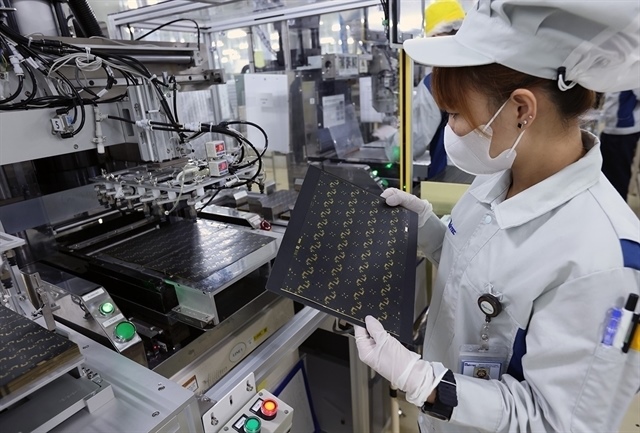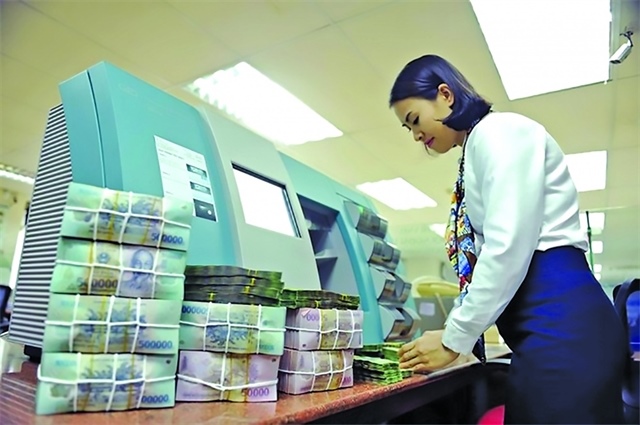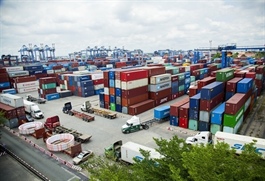Heavy tasks set up to reach growth goals
Heavy tasks set up to reach growth goals
The government is placing prime priority on boosting economic growth via key drivers, with the business community set to get more assistance.
More jobs can be created to stimulate economic recovery through more efficient public investment
Prime Minister Pham Minh Chinh last week ordered ministries and localities nationwide to apply all the best solutions to spur on local production and business activities, which will help push up economic growth.
“All efforts must be made to achieve all targets earlier set. Economic growth must be the number one priority now. We must boost both aggregate supply and demand of the economy. To this end, there are three key drivers of growth: investment, export, and consumption,” PM Chinh said. “The State Bank of Vietnam must “continue implementing the effective, timely, flexible, and proactive monetary policy through the continuation of reducing lending rates, restructuring debts, and increasing the money supply.”
He also ordered ministries to work with one another to exercise prompt fiscal policy via the continuation of exempting, reducing, and extending the payment of taxes and fees, in addition to quickening tax refunds and public investment.
The Ministry of Planning and Investment (MPI) is continuing updates on economic growth scenarios in line with new developments of the international and domestic economic situation.
The economy grew 3.32 per cent on-year in the first quarter of the year before bouncing back to 4.14 per cent on-year in the second quarter, for a six-month growth rate of 3.72 per cent on-year.
The MPI earlier reported to the government two economic growth scenarios for the last six months of 2023 and the whole year, based on such a low growth rate for the first half of 2023, which was also the lowest six-month growth rate for more than a decade.
Under the first scenario, the economy is expected to climb 6 per cent this year, with 6.8 per cent for the third quarter and 9 per cent for the fourth quarter, some 0.3 and 1.9 per cent respectively higher than the initial plan set early this year. The rate must be 8 per cent in the second half of the year. Under the second scenario, the entire-year growth rate is projected to be 6.5 per cent, with 7.4 per cent for the third quarter and 10.3 per cent for the fourth quarter, which are 0.9 and 3.2 per cent respectively higher than the initial plan set early this year. The rate must be 8.9 per cent in the second half of the year.
MPI Deputy Minister Tran Quoc Phuong also noted last week that in order to promote growth, the government has been implementing many measures such as accelerating public investment disbursement, increasing exports, and stimulating consumption demand in a drastic, synchronous and effective manner.
“This is a very heavy task, because if growth fails to meet the target this year, it will affect the implementation of the Socioeconomic Development Plan for 2021-2025, the Socioeconomic Development Strategy for 2021-2025, and even further targets for 2030-2045 as proposed by the Resolution of the 13th National Party Congress,” Phuong said.
According to the MPI’s calculations, even if this year achieves the growth target of 6.5 per cent, the average GDP growth in 2024-2025 will have to reach 7.76 per cent a year so that Vietnam can achieve a five-year average growth rate of 6.5 per cent, which is almost close to the five-year target of 6.5-7 per cent, as determined by the Resolution of the 13th National Party Congress. And if the growth rate in 2023 is only 6 per cent, the two years of 2024-2025 must hit an average growth rate of 8 per cent a year.
“These are very high growth rates, especially in the context that the global economy still has too many uncertain factors and the domestic economy still has many potential risks. It is very difficult to achieve these targets, without more breakthrough mechanisms and policies,” Phuong said.
Vietnam’s Purchasing Managers’ Index increased to 48.7 points in July from 46.2 points in June, 45.3 points in May, and 46.7 points in April.
“This has shown positive signals, and the gross industrial output, the number of new orders, and employment have witnessed a slower reduction,” said the Ministry of Industry and Trade.
PM Chinh said, “Local production, especially industrial manufacturing, is reviving. So we need to boost it. We must accelerate administrative reform and improve the investment and business climate in favour of investors and enterprises.”
The government last week established a special working group on boosting administrative reform. The taskforce is led by Deputy Prime Minister Tran Luu Quang, with other members being ministers.
PM Chinh ordered relevant authorities nationwide to publicise administrative procedures on the relevant national database so that cadres, public servants, the public, and businesses can know, implement, and supervise the implementation.
Procedures that are newly issued, amended, supplemented or annulled must be made clear on a monthly basis to ensure close control over the enactment and implementation of procedures.
However, despite some improvements in domestic production, global risks remain, affecting the Vietnamese economy’s performance.
The World Bank last week released its forecast with a moderate growth for Vietnam of 4.7 per cent in 2023, gradually accelerating to 5.5 per cent in 2024 and 6.0 per cent in 2025. “Vietnam’s economy is being tested by internal and external factors. To boost economic growth, the government can support aggregate demand through effective public investments, thereby creating jobs, and stimulating economic activity,” said Carolyn Turk, World Bank country director for Vietnam.
A couple of weeks ago, Fitch Solutions revised down Vietnam’s economic prospects for this year. “We expect Vietnam’s real GDP growth to slow sharply from 8 per cent in 2022 to 5.8 per cent in 2023,” Fitch Solutions said.
The Asian Development Bank last month also revised its growth forecast for Vietnam down from 6.5 to 5.8 per cent in 2023, and from 6.8 per cent to 6.2 per cent in 2024.
Prompted by economic difficulties, the International Monetary Fund has also reduced its 2023 prediction for Vietnam’s growth from 6.2 per cent in January to 4.7 per cent last month.



























